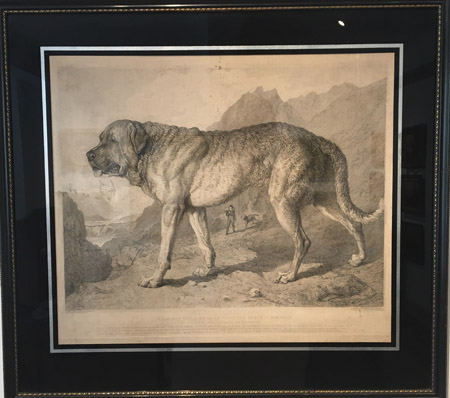
Mastiff
|
|
It is believed that all of the breeds today, one of the oldest types is the Mastiff, descended from the giant Molossus dogs of long ago, whose origins date back to Babylonia and Assyria of twelfth century B.C. Historically, the ancient Babylonians and Assyrians people who lived between the Tigris and Euphrates rivers -- used these massive canines to hunt lions and wild horses, to protect their homes, and to fight their enemies. They are mentioned in cuneiform descriptions and are depicted on many carvings. Used by some as a fighting or a baiting dog similar to the Bulldog, the Mastiff is most probably the "bandogge" which the 16th century writer Dr. Caius referred to. Made almost extinct because of rationing during World War II, the Mastiff had enjoyed a popularity, which, if we are to judge by the works of art left behind depicting the breed, reflected its prominent place in English history. A dog greatly resembling the Mastiff was in England when the Roman legions invaded England in 55 BC, and it has evidently been in the country ever since. Whatever its origins in England, the breed figures largely in the pre-Victorian history of England, being used as a fighting dog, but more significantly as a guard dog which protected the estates of the landed gentry. Tied up during the day, the Mastiff was let loose at night to roam vast areas of land. It is said that the dog, once shown the boundaries of the estate, never roamed beyond it. William Harrison, in his Description of England, of 1586, explains that the bandogge was so called "because manie of them are tied up in chaines and strong bonds in the daie time for doing hurt abroad, which is in a huge dog, stubborn, ouglie, eager, burthenouse of bodie (and therefore of little swiftness), terrible and fearful to behold...." |
Home | About
the WS Gallery | Current
Exhibition | New
Additions | Search Our Inventory
| Commissioning Paintings | 19th
& 20th Century Oils | Contemporary
Artists | Works
on Paper & Collectibles | Books
| Christine Merrill
| Guest book | Email
Us
All images, designs and information on this site
are fully copyrighted © 1999
and may not be reproduced of used in any form or any manner, or displayed in
any way
on any website without the express written consent of The William Secord Gallery,
Inc.
William Secord Gallery, Inc.
29 West 15th Street 4th floor
New York, NY 10011
Between Fifth and Six Avenues
www.dogpainting.com
wsecord@dogpainting.com
Tel. 212-249-0075
212-249-0896
By appointment
